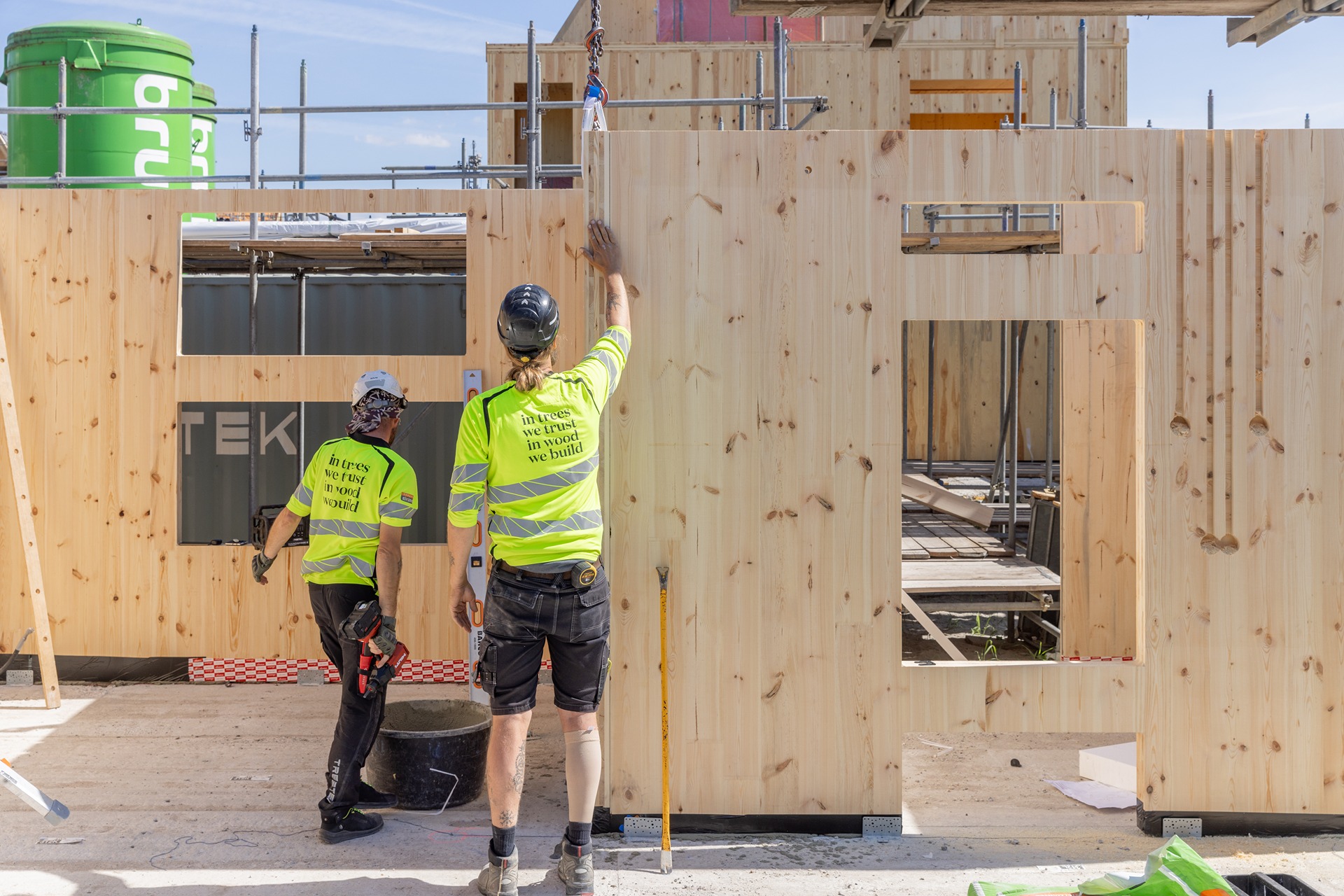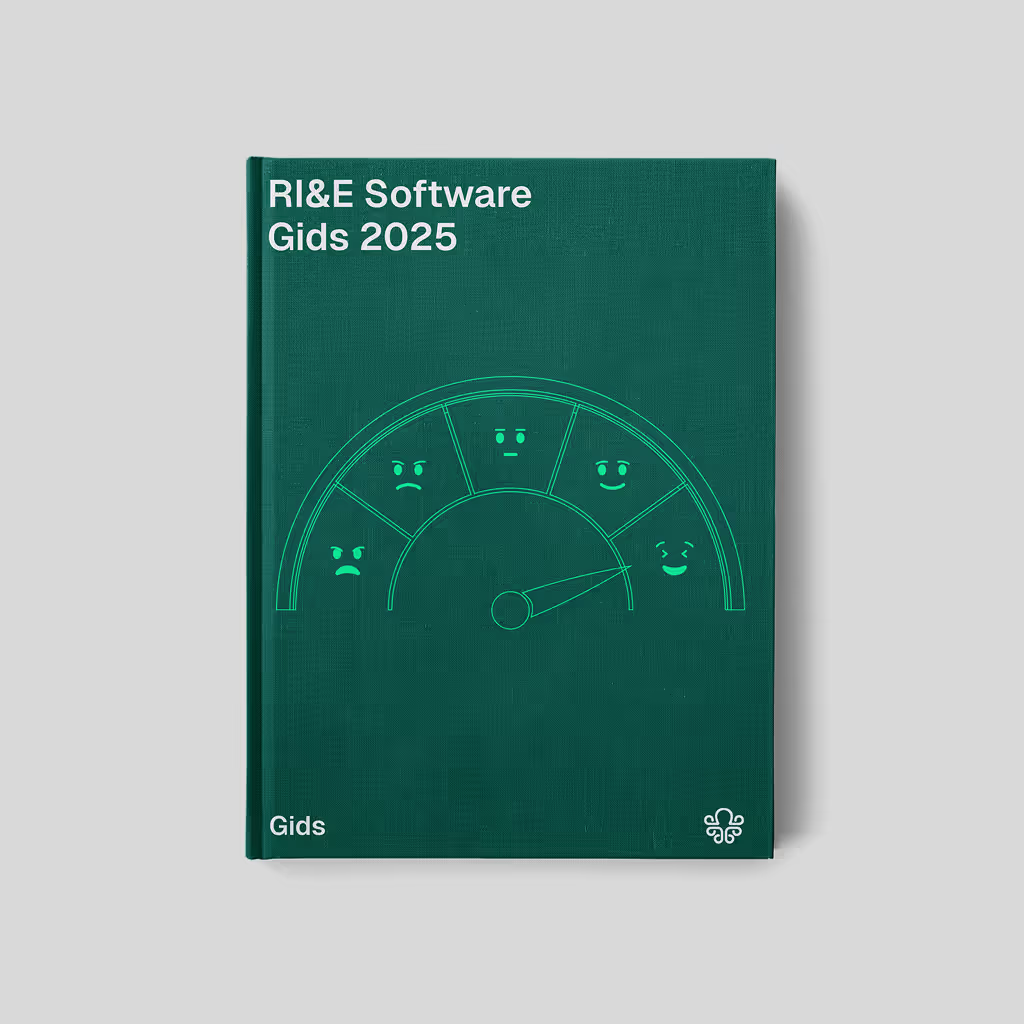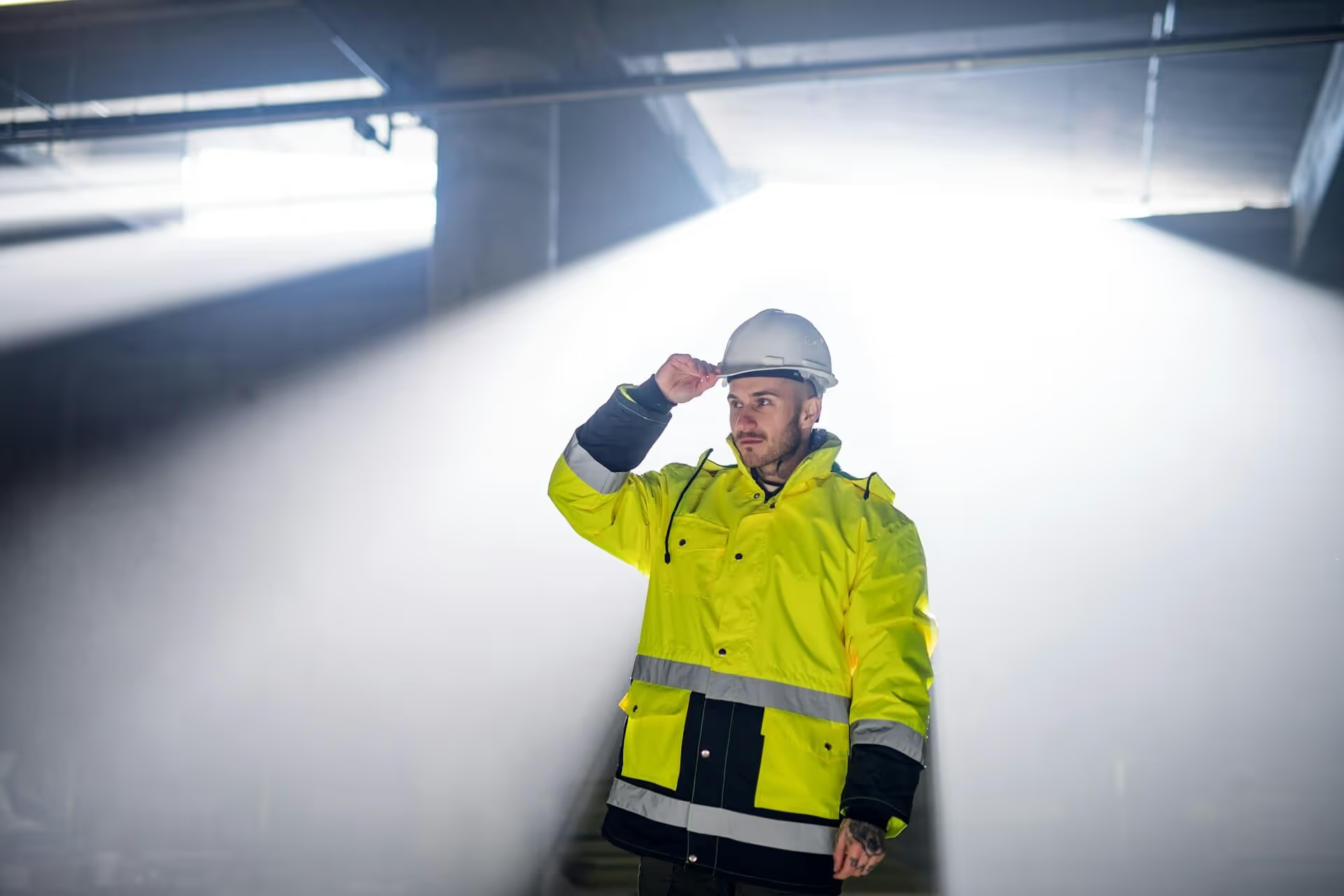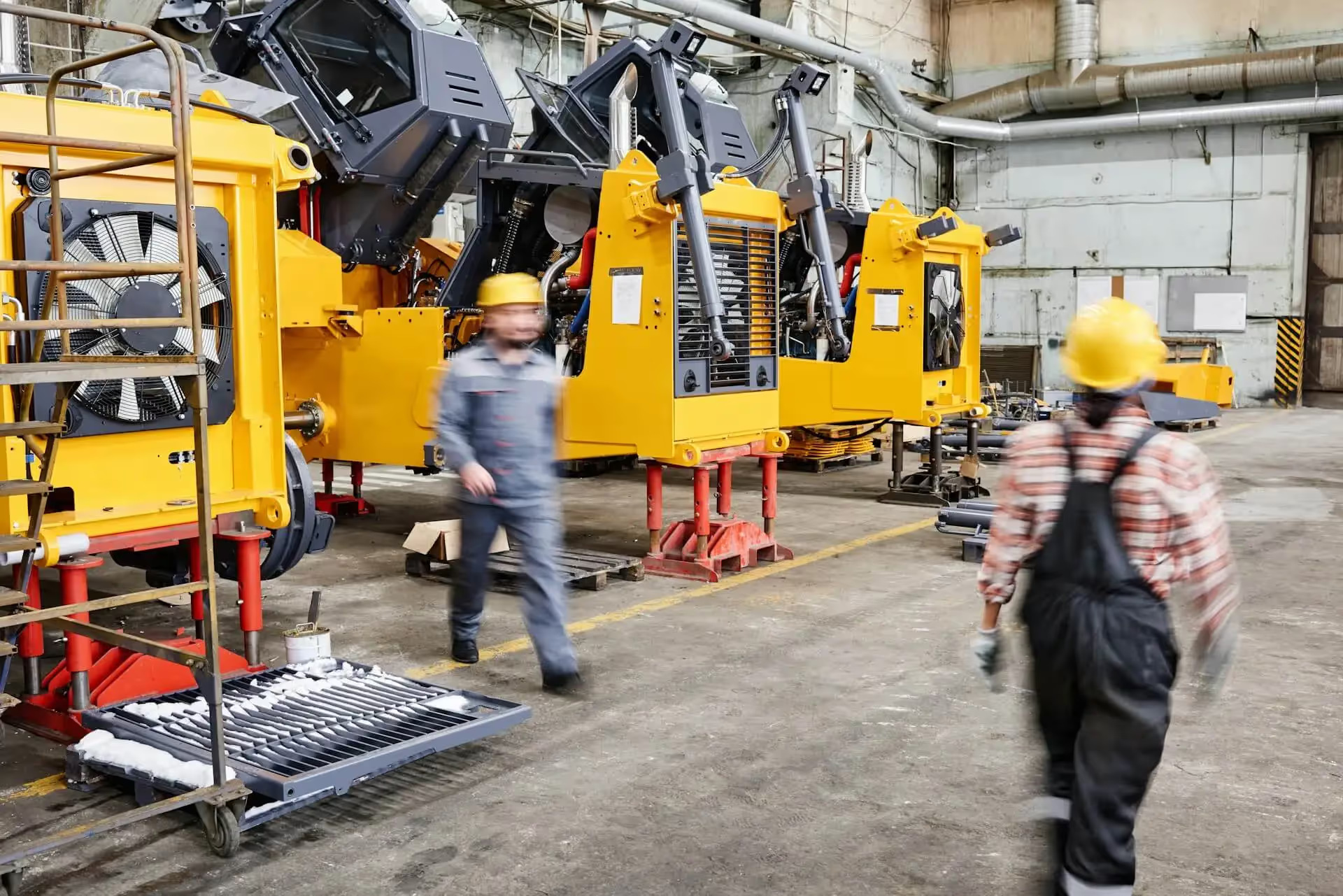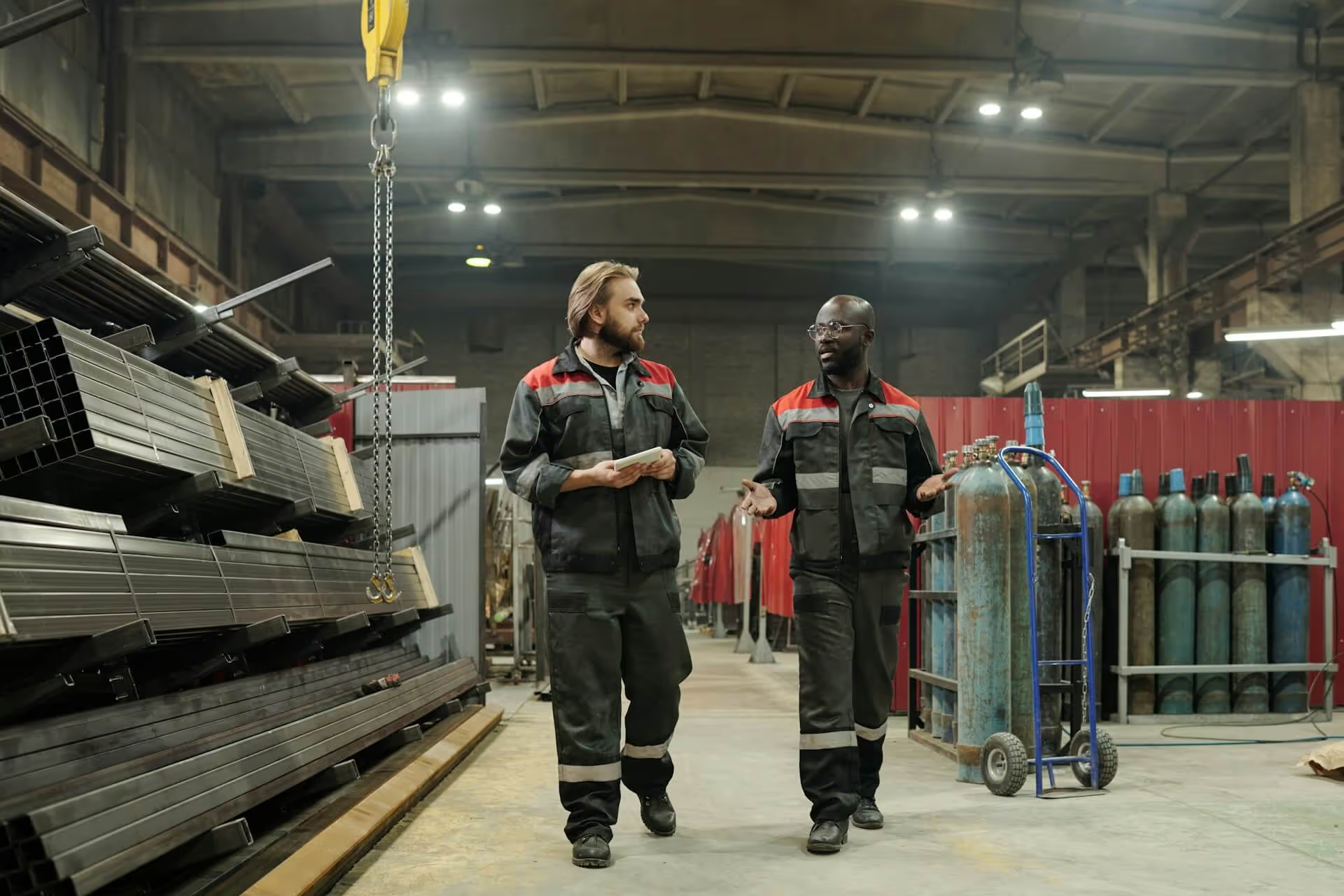Why is there an risk assessment & evaluation (RI&E) specifically for construction?
Risk of falling, heavy machinery and time pressure. Common risks in the construction sector. Not to mention all those subcontractors who all use their own way of working.
Construction is not a standard office environment and this is reflected in the risks involved. Every project is different, but one thing is the same: safety should really be your top priority in construction.
For this reason, an RI&E (Risk Inventory and Evaluation) is mandatory. It often still feels like an administrative burden for many companies. You simply need that check mark for inspection. It's forever a shame if you keep looking at your RI&E like that. If you take a smart approach, an RI&E not only helps you comply with all the rules, but it also really helps you work more safely.
In this blog, we show you how you can work more safely, with a concrete approach that really works in the construction sector.
With a 'standard' RI&E, you often fall short in the construction sector. This is because we work at height, with machines and with external parties. An approach that is fully tailored to this sector is really necessary.
Unfortunately, the numbers don't lie either:
- In 2023, according to the CBS, there were around 6,000 work accidents in construction with four or more days of absenteeism.
- In 2021, 196,000 employees in the Netherlands reported an accident at work; in construction, the proportion of absenteeism accidents was above average.

This involves completely different aspects in construction. If you cannot provide a good and correct RI&E, it can cost you dearly. This includes:
- Fines of up to €4,500 per offence for the absence of a current RI&E
- Fines for an untimely plan of action of up to €3,000 per offence
- Liability in case of injury or damage
- Stoppage of work
- Reputational damage towards the client
- Failure to meet insurance conditions (see also our recent blog article”being insured starts with a watertight RI&E“)
Working safely starts with good insight. A good RI&E is the right basis for this.

What should be included in an RI&E Construction?
A construction RI&E must identify the risks that are specific to your work environment. More importantly, each risk must clearly show how you manage the risk.
In the construction sector, you can think of the following themes:
- Risk of falling (scaffolding, roofs, ladders)
- Working with dangerous machines (excavators, cranes)
- Working with hazardous substances (such as quartz dust or PUR adhesives)
- The layout of the workplace (tripping hazard, room to move)
- Having personal protective equipment (PPE) in use and availability
- The (high) workload and communication on location
- Cooperation with subcontractors and freelancers
You must also comply with all relevant laws and regulations, such as the Working Conditions Act, the Working Conditions Decree and any additional requirements from the industry or collective labor agreement.
Of course, we are happy to help you get started. A convenient starting point is Industry RI&E instrument for the construction sector

A practical step-by-step plan for setting up your RI&E construction
Of course, you don't want to forget anything when preparing your RI&E. With this practical step-by-step plan, you can systematically identify the risks. In addition, you also comply with the legal requirements that are set.
1. Determine the scope
- What do you include in your RI&E: the project locations, temporary workplaces, subcontractors?
- Who carries the RI&E Wrong? Do you do this entirely internally or with external support?
- Use convenient digital systems for overview and assurance, such as the ISO2HANDLE system.
2. Inventory of the risks per construction phase
- Start at the very beginning, when preparing (work preparation, logistics).
- Then you take a good look at the implementation phase.
- And finally, to the completion phase, or delivery.
To inventory the risks, use checklists, observations, toolbox meetings and interview your employees to really uncover all the risks present. The people on the floor see and know everything.
3. Analyze and weigh the risks carefully
- What are the chances of something going wrong?
- What exactly is the impact if things go wrong?
- And which risks require immediate action and are a priority?
4. Draw up an action plan.
In this plan of action, you will determine a few things for each risk. What measures are necessary for each risk? Who is responsible for which risk? And when should the measures be taken?
To do this, you can also read our article 'How to make an action plan for your RI&E'read.
5. Test your RI&E
If you employ more than 25 employees, you must have the RI&E tested. Have a core expert or certified occupational health service take a look at you. You do the testing not only because of the set rules, but also to prevent possible blind spots.
6. Ensure good execution and communication
- Make your agreements concrete in work instructions and toolboxes.
- Communicate clearly and clearly about the measures to be taken.
- Provide visible safety instructions at location (s).
We also recently wrote an article about this, you can find it here: 10 tips for making the RI&E live in the workplace.
7. Keep your RI&E up to date
- Have new projects or working methods been introduced? Then adjust your RI&E immediately.
- Make sure you record an evaluation moment, this can be done annually or per project.
Would you like to know more about risk assessment in the workplace? Be sure to read our comprehensive blog.
Common mistakes in construction, here's how to prevent them
An RI&E is not an exercise, but a legal obligation and also an important tool for a safe working environment. However, things still often go wrong. We've listed a few common mistakes for you:
- There is no plan of action. Naming risks without linking them to actions is simply pointless
- The people in the workplace are not involved. It will be a RI&E paper without input from engineers and contractors. It does not take into account how it really is.
- The created RI&E disappears into the drawer. Only when something happens, he gets caught. Then this is often too late.
- The risks are out of date. Are the risks changing by using new techniques and materials? Check regularly whether your RI&E is still correct.
With a digital solution, you can keep control and overview from now on. No separate documents, no outdated lists. Everything is clear and structured.
The power of continuous improvement
After all, a good RI&E is not a one-off action. It is part of an ongoing process, especially in construction. Construction conditions can vary by project and day.
By periodically reviewing your risks and including learning points from incidents or near misses in your RI&E, you will work step by step to create a safe working environment.
So schedule structural evaluation moments and always involve people in the workplace. They are often the first to identify where the problem is. Because you will approach safety as an integral part of your business operations, you will make a real difference in the workplace.
Working safely starts with good insight
An RI&E that is fully tailored to the construction sector makes work safer, clearer and more future-proof.
An RI&E doesn't have to be complicated at all. With the right approach, and a practical tool, you comply with the rules and work more safely.
See our solution for the construction RI&E? Feel free to schedule a short demo contact one of our experts or feel free to contact contact with us.
Quality, Health, Safety and Environment?



